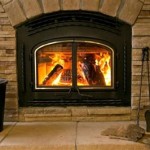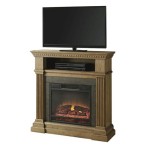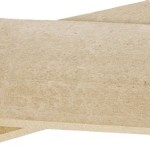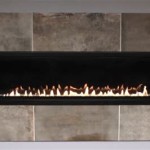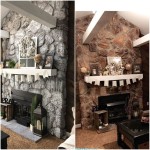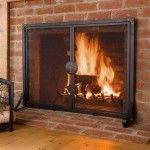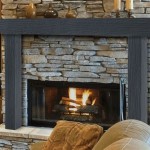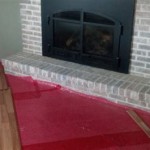Fireplace Heat Reflectors: Maximizing Heat Efficiency and Comfort
Fireplaces, with their cozy ambiance and comforting warmth, have been a cherished feature in homes for centuries. However, traditional fireplaces are notorious for their inefficiency in distributing heat. A significant portion of the heat generated by a fire escapes up the chimney, leaving the room relatively cold. This is where fireplace heat reflectors come into play, offering an effective solution to maximize heat distribution and enhance the overall warmth and comfort of a space.
Fireplace heat reflectors, also known as fireplace heat shields, are strategically placed panels designed to reflect radiant heat from the fire back into the room. These reflectors are typically made of heat-resistant materials like aluminum, stainless steel, or even tempered glass, ensuring durability and long-lasting performance. By directing the heat flow, these reflectors significantly improve the efficiency of the fireplace, allowing more warmth to reach occupants and making the room feel significantly warmer.
How Fireplace Heat Reflectors Work
Fireplace heat reflectors operate on the principle of radiant heat transfer. Radiant heat travels in straight lines, and when it encounters a reflective surface, it bounces back. As the heat from the fire is directed towards the reflector, it is then reflected back towards the room, effectively increasing the amount of heat available for warming the space. The reflective surface of the heat shield acts as a barrier, preventing heat from escaping up the chimney.
The effectiveness of a heat reflector depends on its design, size, and material. Some reflectors are designed with a specific angle to maximize heat distribution, while others have adjustable panels for customized positioning. The material chosen for the reflector also plays a role, with materials like aluminum and stainless steel offering excellent reflectivity. Choosing the right heat reflector for your fireplace will depend on the size and layout of your room, as well as your individual heating needs.
Benefits of Using Fireplace Heat Reflectors
Fireplace heat reflectors offer a number of benefits, making them a valuable addition to any fireplace setup. These benefits include:
Increased Heat Efficiency:
Fireplace heat reflectors significantly improve the efficiency of your fireplace by directing more heat back into the room. This reduces heat loss and increases the overall warmth generated by the fire.
Improved Comfort:
By maximizing heat output, heat reflectors create a more comfortable and enjoyable environment around the fireplace. The increased warmth allows you to sit closer to the fire without feeling the chill, making it a more inviting and cozy space.
Reduced Energy Costs:
With increased heat efficiency, you may find that you need to use your central heating system less frequently, leading to potential savings on your energy bills. Fireplace heat reflectors, however, are not a replacement for your primary heating source, and they should never be used to heat an entire house.
Enhanced Fire Safety:
Some heat reflectors are designed to prevent sparks and embers from escaping the fireplace, adding an extra layer of fire safety. This is particularly beneficial for homes with young children or pets, as it helps to mitigate the risk of accidental burns.
Aesthetic Enhancements:
Fireplace heat reflectors are available in a variety of styles and finishes, allowing you to choose an option that seamlessly blends with your fireplace design. Some reflectors are even designed to add visual appeal to your fireplace setup.
Types of Fireplace Heat Reflectors
Fireplace heat reflectors come in a variety of designs, each with its own advantages and disadvantages. Some of the most common types include:
Standard Reflectors:
These are typically flat panels made of aluminum or stainless steel. They are simple to install and offer good heat reflectivity. However, they may not be as effective at directing heat in specific directions.
Adjustable Reflectors:
These reflectors feature adjustable panels that can be angled to direct heat to specific areas of the room. This allows for greater control over heat distribution and can be particularly useful for maximizing warmth in specific seating areas.
Glass Heat Reflectors:
Glass heat reflectors offer both functionality and style. They are typically made of tempered glass and can withstand high temperatures. They also provide a clear view of the fire while reflecting heat effectively.
Choosing the Right Fireplace Heat Reflector
When choosing a fireplace heat reflector, it is essential to consider factors such as the size of your fireplace opening, the layout of your room, and your personal preferences. It is also important to choose a reflector made from durable, heat-resistant materials that meet safety standards.
It is recommended to consult with a fireplace professional to determine the best type of heat reflector for your specific needs. They can help you select a product that is both effective and aesthetically pleasing, enhancing the functionality and enjoyment of your fireplace.

Fireplace Reflector

Heat Reflectors Frontier Fireplaces

Heat Reflector Shield Fireback 304 Stainless Steel Chimney S Inc

How To And Why You Should Use A Fireplace Heat Reflector Ehow

Fireplace Reflector

Fireplace Hood Canopy Or Heat Deflector Project Small House

Fireplace Reflectors Improve Wood Burning Heat Efficiency

Heat Reflectors To Churn Out 40 More From Your Fireplace Hometone Home Automation And Smart Guide

Heat Reflector Shield Fireback 304 Stainless Steel Chimney S Inc

Reflective Fire Backs Grate Wall Of
Related Posts

